Are you utilizing any 401k matching opportunities that are available to you?
When it comes to saving for retirement, the most popular savings vehicle Americans use is the 401k plan. It’s not hard to determine why they’re such a crowd pleaser, either. With tax advantages and many employers offering match opportunities, a 401k can help you reach your financial goals. So, are you making the most of your employer’s 401k offering?
If you have a 401k through your employer, here’s what you need to know about matching and how you can make the most of this benefit.
401k Matching: What is it?
Employer matching is when your employer contributes a certain amount of money to your 401k plan based on how much you’ve contributed that year. Keep in mind that not all employers handle 401k matching the same way. Your employer may be incredibly generous with their matching formula, or they may not match at all. While uncommon, some employers contribute regardless of your own contribution. You’ll want to check the specifics of your employer-sponsored plan to understand their401k matching strategy.
Typically, however, there are two common types of 401k matching contributions that employers practice:
- Partial Matching: If an employer offers a partial match, it means they’ll match part of the money you contribute to a 401k, up to a specific amount. The most common partial match provided is 50% of what you contribute, up to 6% of your annual salary.
- Full Matching: A full match means that your employer will match your 401k contributions dollar-for-dollar, up to a specific amount. So, if they offer 100% matching up to 6% of your salary, and you contribute 2% of your salary, they’ll contribute 2% of your salary. If you contribute 8% of your salary, then they’ll contribute 6% of your salary because you’ve exceeded their maximum match.
SEE ALSO: Three Things Startup Employees Should Understand About Their Stock Options
To put an example to these matching contribution options, let’s say you’re earning an annual salary of $100,000. If you contribute 6% – or $6,000 – of your annual salary to your 401k, and your employer matches 50% of that, then you’d be getting an additional $3,000 added to your account balance ($9,000 of total contributions). Or, if your employer offers dollar-for-dollar matches up to 6%, you’d both be contributing $6,000, thus doubling your personal contribution. Failing to take advantage of an employer match is the equivalent of leaving “free money” on the table
401k Contribution Limits
For 2022, the IRS allows for you to contribute up to $20,500 annually to a 401k, unless you’re 50 or older, in which case you can contribute up to $27,000. It’s important to note that employer contributions don’t count toward this limit. However, there is a total limit that your combined contributions must remain under. For the 2022 tax year, the combined limit is $61,000 (or $67,500 if you’re age 50 or older) or 100% of your salary – whichever comes first.
Vesting Schedules for Your 401k
While it’s important to understand your employer’s 401k matching rules, it’s equally important to understand the vesting schedule for your employer contributions. Any money you personally contribute to your 401kis fully owned by you as the account holder. However, when your employer makes matching contributions, they often delay the ownership of those funds. This transfer of ownership is referred to as vesting. Once you have total ownership of the funds your employer has contributed, then their match has fully vested.
It’s important to understand your employer’s vesting schedule because there is a chance that you run the risk of forfeiting your employer match if you leave the company or are terminated before a specific number of years pass. A typical vesting period for an employer is five years, meaning once you’ve worked at your place of employment for five years, then those funds will be fully vested…
SEE ALSO: Five Benefits of RSUs: Understanding the Nuances of Restricted Stock
Roth 401k Matching Contributions
In addition to offering a traditional 401k, some employers offer a Roth 401k, as well. Unlike a traditional 401k where contributions are made with pre-tax money, contributions to a Roth 401k are made with after-tax money. The benefit of putting taxed money into a Roth 401k is that subsequent growth is tax-free, and when it comes time to withdraw your funds after you retire, you can do so tax-free. Conversely, with a traditional 401k the growth is tax-deferred and you’ll have to pay income taxes on any withdrawals you make. Another important difference is that contributions to a traditional 401k can lower your current taxable income and, in turn, lower your tax burden, while contributions to a Roth 401k do not reduce your current taxable income or tax burden.
Concluding Thoughts
401ks are a useful tool to save for retirement, even more so when you can reap the benefits of employer 401k matching. If you’re unable to max out your 401k contributions, then the next best strategy is to contribute the minimum amount required so that you can take full advantage of your employer’s matching contributions.
At Wade Financial Advisory, we’re committed to taking care of what’s important so that you can focus on what matters most to you. If you’d like to speak with one of our professionals about your retirement savings plan, please contact us today. We offer wealth management and investment management services, and personalized, relationship-based service is an integral part of what we do.
We currently serve clients working for companies such as, Tesla Motors, Meta (formerly Facebook), Nvidia, Applied Materials, Apple, Microsoft Corporation, Google, Intel, Cisco Systems, Hewlett Packard, Pure Storage, Zoom Video Communications, Amazon, and Adobe Inc., among many others. We would be pleased to serve you and your family, too!










